“Simply by starting to cook again, you declare your independence from the culture of fast food. As soon as you cook, you start thinking about ingredients. You start thinking about plants and animals and not the microwave. And you will find that your diet, just by that one simple act, is greatly improved.” – Michael Pollan
Contents
What is low-impact cooking?
It’s about reducing the environmental footprint of food preparation by minimizing energy consumption, waste, and reliance on industrialised systems.
But first and foremost, it’s about actually cooking, with real ingredients, rather than relying on processed ready-meals or fast food. It’s about learning cooking skills that are central to all cultures, based on food that can be produced or foraged locally. Cooking connects us to nature, local food producers, community and culture. Skills have been lost, but interest is growing again, as evidenced by the number of food and cookery programmes on mainstream TV.
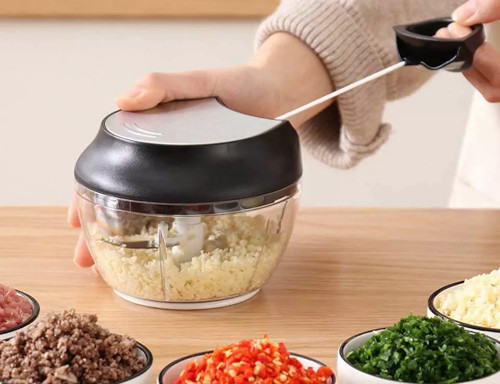
When it comes to the ingredients in your cooking, see the topics in our food, plants and animals sections for information on seasonal, local and organic produce and growing/producing your own. Below are aspects of low-impact cooking.
Fuel
Renewable cooking fuels include wood (wood stoves, rocket stoves and earth ovens), locally-produced charcoal grills, biogas and the sun. And of course raw food requires no fuel at all.
Energy Efficiency
Sustainable cooking techniques and tools require less energy. This includes pressure cookers, slow cookers (crockpots), pot skirts and thermal (retained-heat) cookers. Cooking in bulk, covering pots with lids, and turning off the heat early while letting food finish cooking with residual heat also help save energy.
Waste reduction
Low-impact cooking is about minimising food waste, repurposing leftovers, meal planning, portion control, creative use of scraps (such as vegetable peels for broth) and extending food life via preserving.
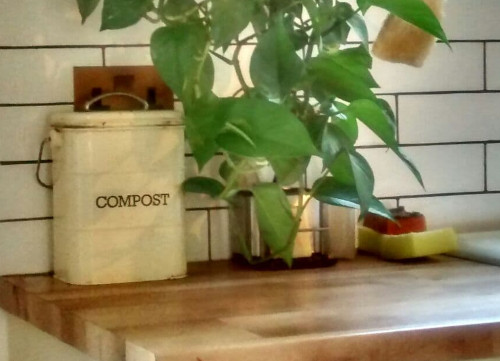
What are the benefits of low-Impact cooking?
Personal
Reducing energy use and waste saves money; bulk cooking and meal planning prevent impulse spending and waste. Cooking local, seasonal, unprocessed food provides more nutrients and vitamins. And of course it’s about pleasure and taste.
Decentralising power away from corporations
Fast food, supermarket and meal-delivery services want to convince people that they’re too busy to cook – that there’s something more important that they should be doing, so they’ve promoted ready-meals as a good thing. Money spent at these corporate outlets accumulates and concentrates, and entrenches the current damaging system. Cooking with local, renewable resources diverts money from them too.
Large agribusiness corporations dominate global food systems, pushing monoculture farming, synthetic fertilizers, and processed foods. Low-impact cooking breaks this cycle by supporting small-scale, local producers and minimizing dependency on industrial supply chains.
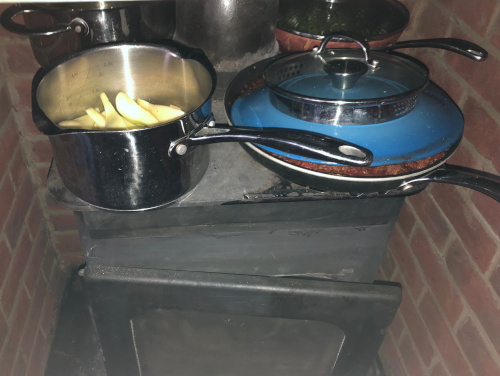
Building community and preparing for any potential collapse scenarios
Knowing how to cook with renewables will be essential if large-scale energy grids fail. And in any kind of collapse scenario (broken supply chains, environmental destruction, financial crash, war, civil unrest etc.), we’re going to have to look after ourselves in our communities, and so the more people with cooking / preserving skills the better. Low-impact cooking goes hand-in-hand with local, sustainable food supply – also essential in case of wider collapse.
Environmental
Reduction in energy use and waste are the biggest environmental contributions of low-impact cooking, along with associated food production systems, with their reduced food transport distances, pesticides, packaging etc.
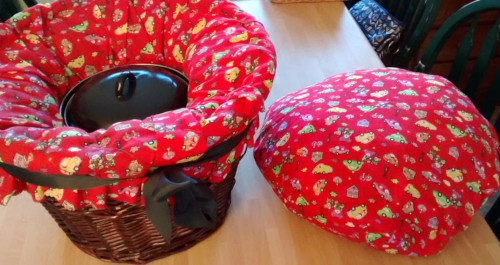
What can I do?
People will have different starting places. Many have lost the habit of cooking from real ingredients. Some of you are good cooks already, but want to be more sustainable / healthier / supportive of your local economy. But first and foremost, avoid corporate supermarkets and fast food outlets if possible. We’re soaked in corporate food advertising that gets kids hooked on brands.
Learning to cook
It’s not about seeing recipes or cookery programmes, then going out and buying all the ingredients. It’s more about seeing what you’ve got in the fridge, freezer, larder, garden, or what’s in season locally, and making something from that. It’s a habit, and people are losing it, but you can gain confidence quickly. If you put really good ingredients together and don’t burn them, it will taste fine. Learn through reading, watching cookery programmes, talking with experienced cooks, and tasting as you go. Teach your kids to cook too, so that they’re not living on take-aways or tinned food when they leave home.
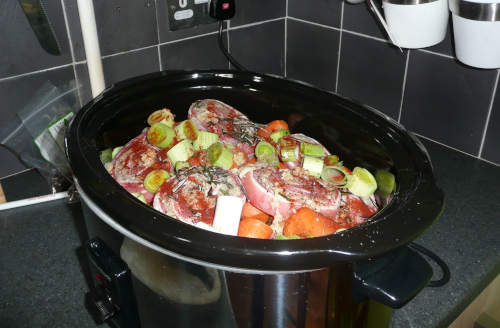
Sharing
Sharing recipes is social, and sharing meals is traditional, social and fun. We can also share produce, equipment, recipes, fuel, or cook different parts of a shared meal, then come together to eat it. Local (commons?) restaurants are a good idea. They can save fuel through bulk cooking, and money via bulk buying. Baking bread is better suited to the community scale too, so that many loaves can be baked at the same time.
Equipment
Have a good set of knives and keep them sharp, a mortar and pestle, wooden chopping board and bowls for mixing, and then you won’t need so many electrical gadgets (charity shops are full of this stuff).
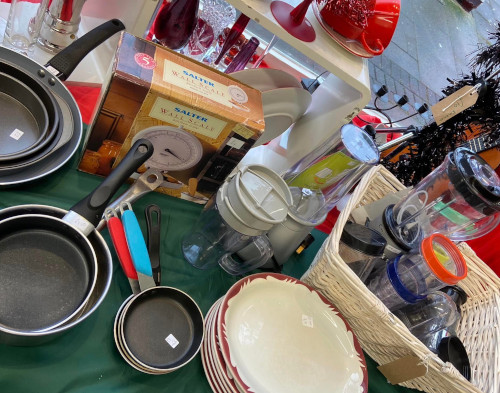
Fuel
Cooking on a wood stove means that you’ll be heating your home as well. Rocket stoves use the least fuel (actually, storm kettles, aka kelly kettles use just a few twigs to boil water). Using rocket stoves, retained heat cookers and solar cookers together is called ‘integrated cooking’. This combination enables you to cook at any time, rain or shine, without fossil fuels. If it’s sunny, use the solar cooker. If not, use the rocket stove. To keep your food hot (from the rocket or solar stove) for up to five hours, or reduce the wood you need for the rocket stove, or free up the solar cooker for another dish, use the retained heat cooker.
However, the modern world makes it difficult to cook with wood. Most people don’t have a stove or a source of wood / storage space, and wood stove cooking takes a long time. And the family / work logistics are more difficult, so it will be marginal until and unless things start to break down. It’s not hard to imagine that gas and electricity supply might be threatened, so the more people who have these skills if they do, the better.
Reducing energy use
You can reduce energy use with little tweaks, like:
- using the right sized pan for the hob ring and for the amount of food you need to cook.
- putting a lid on the pan – can reduce energy use by up to 75%.
- using your oven efficiently by cooking multiple dishes at once and opening the oven door only when necessary.
- switching your oven off 10 minutes before the food is cooked – it will retain heat for a while and cook food without using any energy.
- cutting vegetables into smaller chunks to reduce cooking time.
- introducing more raw food options into your diet.
- batch-cooking and then freezing.
- stackable steamers to steam vegetables above boiling potatoes.
- using pressure cookers and slow cookers – you can get them cheap second-hand.
- using cast iron pans for better heat retention – slower to heat up, but better for slow cooking.
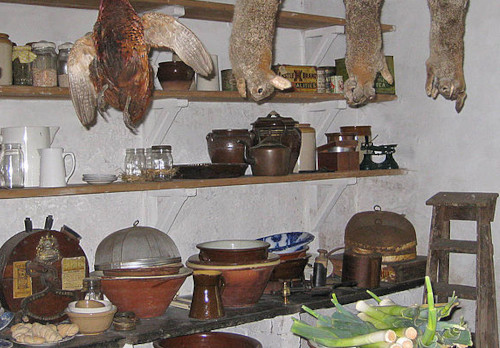
Minimising waste
- Here are some recipes using leftovers, and here’s a site that asks you what you have in your fridge/pantry and gives you recipes.
- Use fresh ingredients quickly and freeze things which you might not get round to eating.
- Have a box or shelf in your fridge where all the ‘use me first’ items are put, so everyone knows they need to be eaten in a day or two.
- When storing dry or canned foods, make sure the new items are placed at the back and the older things at the front.
- Measure portions, especially things like pasta and rice, so you don’t cook too much.
- Keeping chickens can turn leftover food and vegetable peelings into eggs and meat.
- Compost food scraps to divert organic waste from landfill and feed your garden.
- Plan meals and portions to prevent over-purchasing and food spoilage.
- Food preserving and pantries.
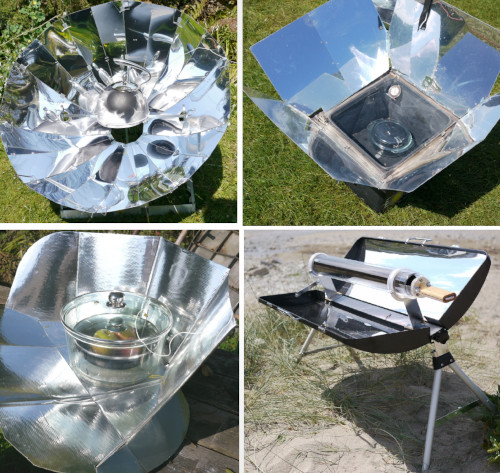
Further resources
- Food Print: cooking sustainably.
- Love Food Hate Waste
- My Fridge Food: gives you recipes for what you’ve got.
- Slow Food
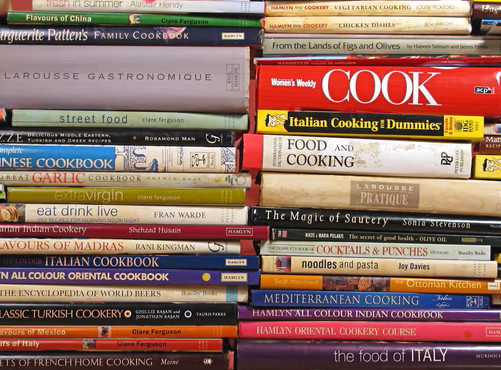
Specialist(s)
The specialist(s) below will respond to queries on this topic. Please comment in the box at the bottom of the page.

Julia Adams of Stroud Commons has been cooking on her woodburner for about five years – it’s saved her lots of money, re -used the heat and the flavour is terrific. She also has a deep knowledge of French home cooking, and she’d like to pass on her experience to help develop local food cultures, and to revive old UK recipes that are suited to long, slow cooking, like Scotch broth and jam roly-poly pudding.

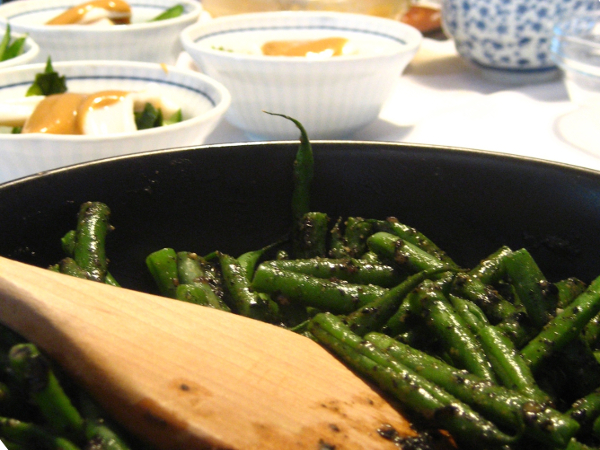
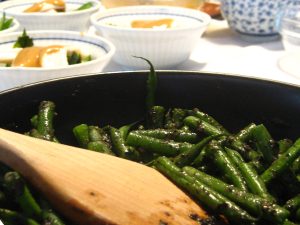
6 Comments
I think a good addition to this section would be to include electric pressure cookers like the Instant Pot. I have solar panels and a battery so cooking beans and lentils, rice and pasta for example in half the time using electricity has brought savings in time and money.
I’ve heard that using a pot skirt can save 10 or 20% in fuel, but if this were true surely there would be one on every cooker. They can’t be very difficult or expensive to make. Some facts and guidance would be an interesting addition to this section
I’m looking forward to seeing this page develop.
I live alone and have a second hand two ring caravan cooker with grill and oven. I feel happier cooking for myself in the small oven as it’s a smaller space to heat and therefore uses less butane.
Outside, I frequently use a forged rocket stove for cooking. The fact that it works better with twigs and sticks makes it ideal for using dry prunings, clippings and dead wood that litter the ground in wooded areas and under hedges.
Another method of cooking is in a wide mouth thermos flask. Boiled potatoes is the most usual. I fill the thermos with potato cut into small pieces, top it up with water. Transfer the whole contents to a pan and bring it to the boil. Meanwhile warm the thermos with a little hot water ( this then goes to make an infusion or to help with the washing up) . When the contents of the pan are boiling, I discard the warming water and tip the contents of the pan back into the thermos. Screw on the lid, not too tight else it is almost impossible to remove later, and then get on with the day. The potatoes or other vegetables are ready in about an hour or so. But still hot several hours later. Without using any additional heat.
We use a Wonderbag (a non-electric, insulated bag) for almost all cooking. Except for the time it takes to bring the dish to a boil, it does most of the “cooking”, continue to cook the dish for up to 8 hours just like a slow cooker. (Mother Earth News has plans for building a haybox cooker, or one could copy the Wonderbag design.)
We also use a solar oven, although it does require turning periodically to face the sun to maintain hot temperatures.
I didn’t noticce any mention of a Kelly Kettle for cooking. (Did I not read carefully enough?)
Most of my cuppas, especially when out on my wildlife conservation work, are made that way. At zero financial cost but a small amount of CO2 production and pollution costs. So: Sinner or Saint?
By the way my bobble hat is a.k.a. the Cooking Hat in the family. Added to a saucepan or tin it’s a primative slow- or finishg-off-cooker.
Peter – yes, storm kettles (kelly kettles) are great. I’ve used them and they work surprisingly well – boil water fast using just a few twigs. I added a sentence under what can I do? / fuel. Love the cooking hat idea too.